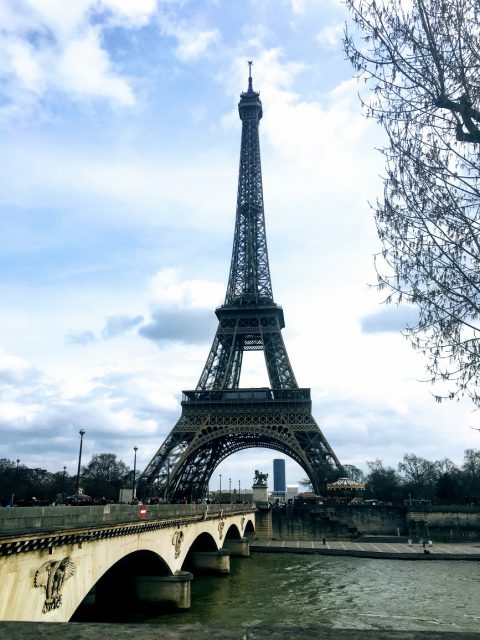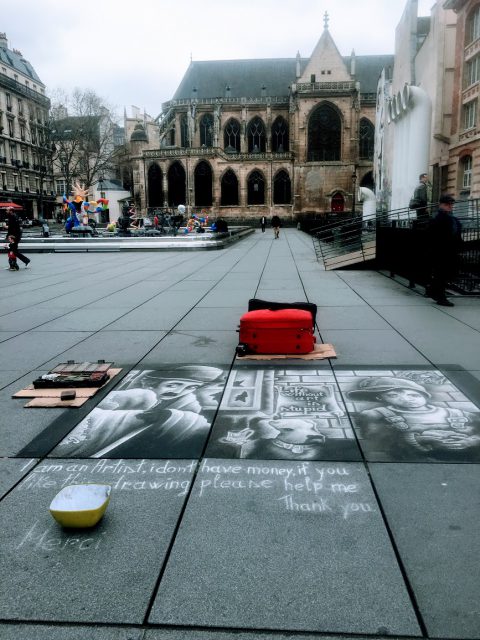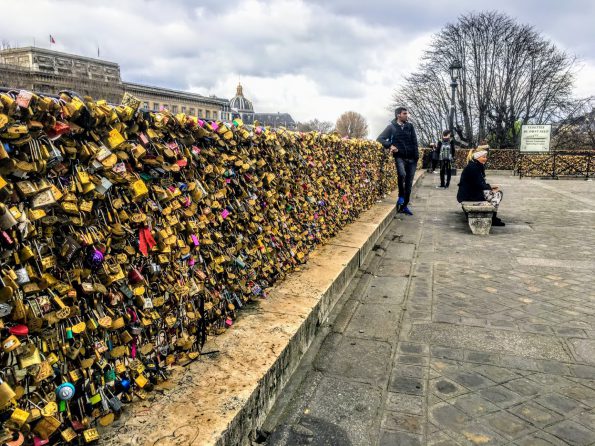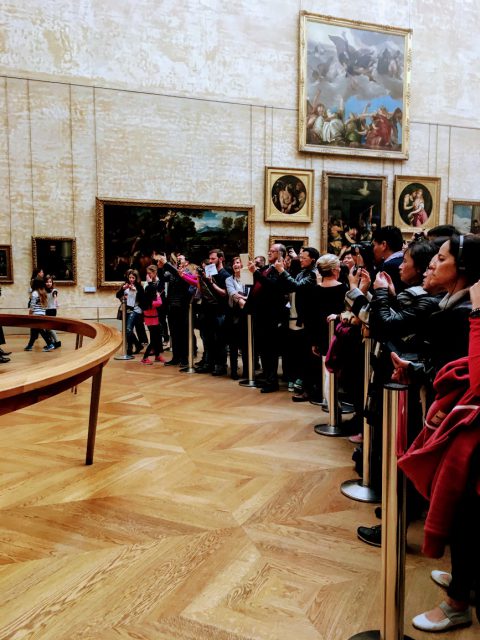By: Miriam Friedman

Paris is an artistic world trapped in a small city. In movies and books the city seems limitless; but in truth, the French capital has an area of only 33.5 miles. Most of the famous sights—like the Eiffel tower and the Louvre—are concentrated in the city center, making it possible to see many of them in a single day. But there is so much more to the city than crossing sights off a checklist. To truly see Paris, the tourist must linger, noticing the medley of people—both foreigners and locals—who make this historic metropolis the center that it is today.

Paris is a city of art. In the Marais area, in the fourth arrondissement, there are temporary sidewalk murals on the concrete beside rows of old brick archways. An exchange of smiles ensues as someone tosses a coin in the bowl before the drawing, and continues onward. Only a short walk away at Pont Neuf, an iron fence is overrun with colorful love-locks. A couple stands at the center writing their initials on the lock. Glancing left and right, the two toss the key into the river, kissing each other as they leave.

Beyond the conventional art, eating in Paris is also an experience. The French value presentation just as much as they do taste, and they decorate each dish with colorful swirls and garnishes. Even a common croissant is a culinary delicacy. Deconstructing these pieces, then, takes time. Therefore, meals are eaten leisurely—usually taking around two or three hours—which means that people have the chance to have long and relaxed conversations. While indulging in this elaborate French cuisine, acquaintances become friends.


A visit to Paris is incomplete without a stop at the Louvre. But the museum is filled with more than famous paintings and their visitors. Artists who acquire a permit can come to copy the works of their idols like Monet and da Vinci. The spectators do not know the hard work that goes into obtaining permission to paint here, but take pictures beside these modern works anyway.

In a hallway on the second floor of the museum, lies Leonardo da Vinci’s Mona Lisa. But almost as interesting as the painting itself is the crowd of people gathered before it. Selfie-sticks are banned from the location as they interfere with the photos of too many visitors. This doesn’t stop most from finding a way to capture a photo of themselves with the lady’s famous smile. Somehow, the thousands of tourists who take the same picture manage to add their own creative spin—be it a silly face or gesture—that makes their “art” unique.
Outside the museum, the Parisian aesthetic of cobblestone streets and gothic buildings makes walking the roads magical by itself. It is possible to wander in Paris for days, weeks, months, even years, and not see everything. Each street has deep roots, a rich history, and an exciting possibility for new adventure. Still, somehow only one day in Paris can have a person head over heels, falling for a city she once knew nothing about.
But it is impossible not to fall in love. Paris fulfills every fantasy, and more. Though it is small, it is also endless.
